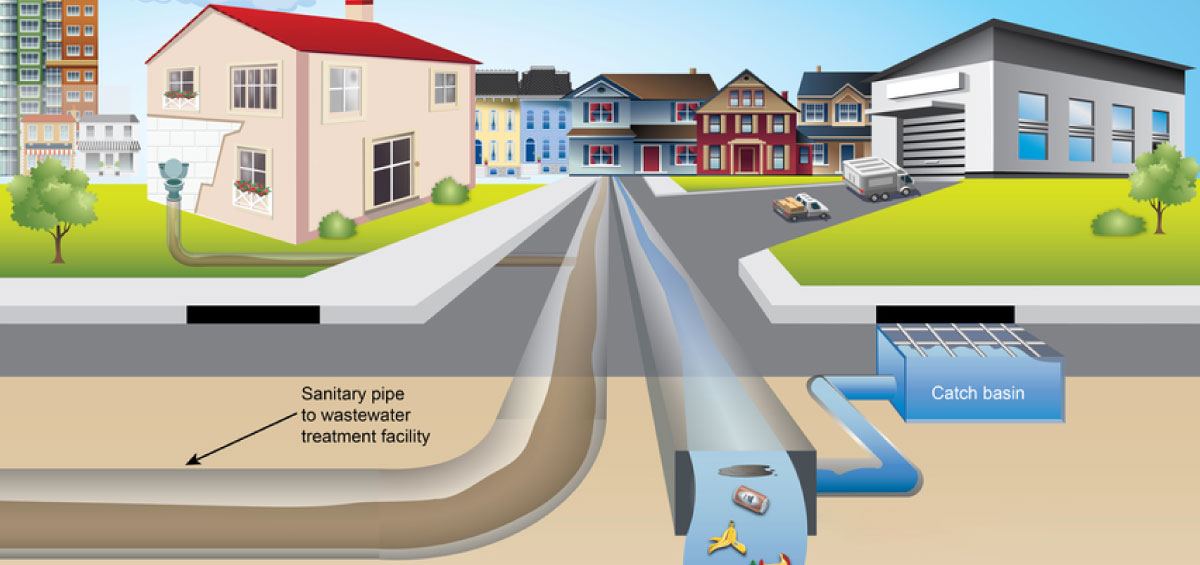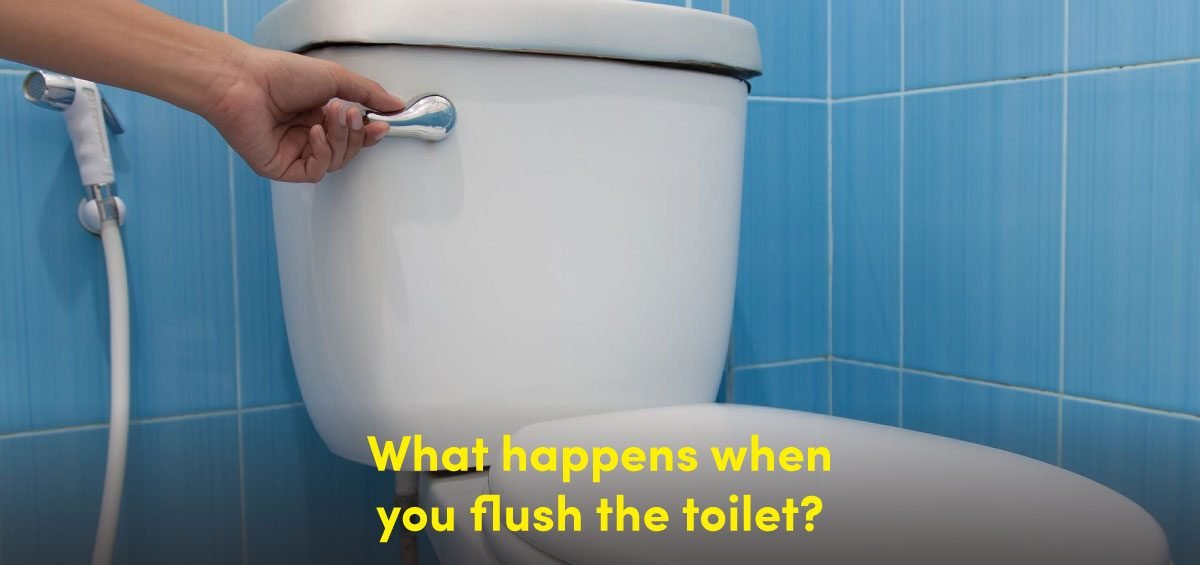Why is Toilet Waterproofing Needed ?
Each time you flush the toilet or you wash something down the sink’s drain, you create sewage, also known in polite society as wastewater. There are three main things about wastewater that make it something you don’t want to release into the environment:
It contains suspended solids and chemicals that affect the environment. For example: Wastewater contains nitrogen and phosphates that, being fertilizers, encourage the growth of algae. Excessive algae growth can block sunlight and foul the water.
Wastewater contains organic material that bacteria in the environment will start decomposing. When they do, these bacteria consume oxygen in the water. The resulting lack of oxygen kills fish.
The suspended solids in wastewater make the water look murky and can affect the ability of many fish to breathe and see.
It contains harmful bacteria. Human waste naturally contains coli form bacteria (for example, E. coli) and other bacteria that can cause disease. Once water becomes infected with these bacteria, it becomes a health hazard.
It stinks. If you release wastewater directly into the environment, things get very smelly very fast.

Septic Tank
Regular ‘pumping’ removes sludge and scum from the tank, helping to keep a septic system in top shape. A well-designed, properly installed septic system can last for decades or fail in just a few years. It’s up to you how long the septic tank can function. Maintaining healthy septic systems isn’t all that expensive, but you could easily spend tens of thousands to dig up and replace a septic system that has totally failed. As the old saying goes, an ounce of prevention is worth a pound of cure. It’s important to learn how a septic tank works. Good maintenance starts with understanding how does a septic system work and how it can fail. Let’s take a look underground and see what’s supposed to happen in a well-functioning septic system. After that, I’ll show you why things go wrong and give you some pointers for keeping your system in top shape.
Toilet Waterproofing :-
Specifically, this is how a typical conventional septic system works:
- All water runs out of your house from one main drainage pipe into a septic tank.
- The septic tank is a buried, water-tight container usually made of concrete, fiberglass, or polyethylene. Its job is to hold the wastewater long enough to allow solids to settle down to the bottom forming sludge, while the oil and grease floats to the top as scum. Compartments and a T-shaped outlet prevent the sludge and scum from leaving the tank and traveling into the drain field area.
- The liquid wastewater (effluent) then exits the tank into the drain field.
- The drain field is a shallow, covered, excavation made in unsaturated soil. Pretreated wastewater is discharged through piping onto porous surfaces that allow wastewater to filter though the soil. The soil accepts, treats, and disperses wastewater as it percolates through the soil, ultimately discharging to groundwater. If the drain field is overloaded with too much liquid, it can flood, causing sewage to flow to the ground surface or create backups in toilets and sinks. Toilet waterproofing is its solution.
- Finally, the wastewater percolates into the soil, naturally removing harmful coli form bacteria, viruses and nutrients. A coliform bacterium is a group of bacteria predominantly inhabiting the intestines of humans or other warm-blooded animals. It is an indicator of human fecal contamination.

What Is The Difference Between A Septic System And A Sewer System?
Q. Where does the waste go?
Septic System: The waste goes into a holding tank.
Sewer System: Sewers lines carry waste to a treatment facility.
Q. How does it work?
Septic System: Bacteria break down the solid waste and the liquid effluent is then released into the drain field.
Sewer System: The facility removes contaminants and then discharges water back into local water supplies.
Q. What is the cost?
Septic System: If buying a new home from a reputable new home builder, then the cost of the septic system is included in the price of the house.
Sewer System: The cost to use a public sewer system varies depending on location. Some areas separate the cost of water and sewage, while others combine the two.
Q. What type of maintenance is needed?
Septic System: Depending on the usage, septic tanks need to be pumped out yearly or every few years.
Sewer System: None
Q. Who is responsible for the maintenance?
Septic System: It is the homeowner’s responsibility to maintain the septic system.
Sewer System: Your local municipality is responsible for maintaining the public sewer system.
Q. What do you do if it fails to work?
Septic System: Call a professional septic repair company.
Sewer System: Call your local municipality public works department.
Q. What are the benefits?
Septic System: If maintained properly a septic system generally has fewer ongoing costs.
Sewer System: Sewer systems are very convenient and the homeowner has no responsibility for repairs.
Failure symptoms: Mind the signs!
A foul odour is not always the first sign of a malfunctioning septic system. Call a septic professional if you notice any of the following:
- Wastewater backing up into household drains.
- Bright green, spongy grass on the drain field, especially during dry weather.
- Pooling water or muddy soil around your septic system or in your basement.
- A strong odor around the septic tank and drain field.
Simple as a septic system may seem, evaluating its health really requires an expert. There are plenty of contractors who will gladly pump the sludge out of your tank, but in my experience many can’t fully answer how does a septic system work or how it should be maintained. I highly recommend looking for a contractor who has received some formal training in the science of septic systems.
Healthy Homes with its expert and experienced technical team can solve all your toilet waterproofing problems. Give us a call today on 1800-419-4647.


